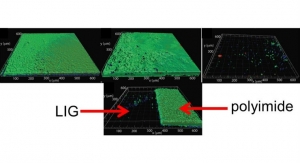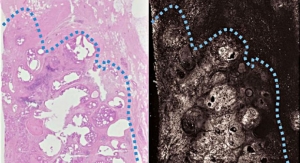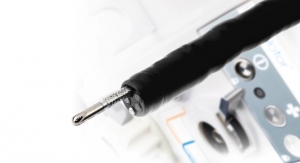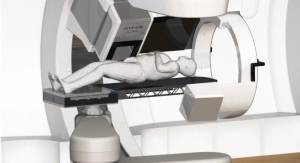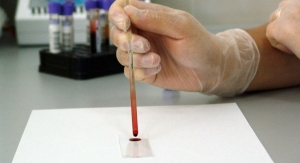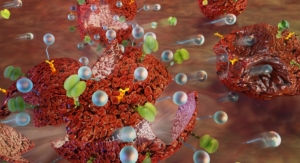Videos
Finding Cancer Before It's Lethal
Finding Cancer Before It's Lethal
Nanotechnology could help scientists detect deadly disease while it's still in its early stages.
By TED Talks05.16.16
More than two-thirds of all global cancer deaths are fully preventable, using methods the medical industry already employs such as vaccinations, timely screenings and of course, quitting smoking. Even with today’s best tools and technologies, however, some tumors cannot be detected until a decade after they've started growing, when they are 50 million cancer cells strong. If only researchers had better technologies, they’d be able to detect some of these more deadly cancers sooner, when they could be removed, at the point they are just forming.
Miniaturization might make that possible. Take the microscope, for example. A microscope in a typical lab that a pathologist would use for looking at a tissue specimen, like a biopsy or a pap smear is used by somebody with years of specialized training to spot cancer cells. Rice University researchers have miniaturized the microscope into a $10 part and it fits on the end of an optical fiber. So, rather than take a sample from a patient and sending it out to be examined under a microscope, the microscope is brought to the patient. And, instead of requiring a specialist to look at the images, the computer can be trained to detect cancerous cells.
That's just one example of how miniaturization can save lives. Engineers tend to think of miniaturization in a literal sense: taking something big and making it small. But computers transformed our lives when they became small enough to be portable. A transformational equivalent exists in medicine. Imagine, for a moment, a detector that was so small it could circulate in the body, find cancerous tumors and send a signal to the outside world. It sounds a little bit like science fiction. But actually, nanotechnology enables scientists to do just that. Nanotechnology allows researchers to shrink the parts that make up the detector from the width of a human hair, which is 100 microns, to 1,000 times smaller, which is 100 nanometers. And that has profound implications.
Physician, bioengineer and entrepreneur Sangeeta Bhatia leads a multidisciplinary lab that searches for novel ways to understand, diagnose and treat human disease. Her target: the two-thirds of deaths due to cancer that she claims are fully preventable. In the video below, she breaks down complex nanoparticle science and shares her dream for a radical new cancer test that could save millions of lives.
Miniaturization might make that possible. Take the microscope, for example. A microscope in a typical lab that a pathologist would use for looking at a tissue specimen, like a biopsy or a pap smear is used by somebody with years of specialized training to spot cancer cells. Rice University researchers have miniaturized the microscope into a $10 part and it fits on the end of an optical fiber. So, rather than take a sample from a patient and sending it out to be examined under a microscope, the microscope is brought to the patient. And, instead of requiring a specialist to look at the images, the computer can be trained to detect cancerous cells.
That's just one example of how miniaturization can save lives. Engineers tend to think of miniaturization in a literal sense: taking something big and making it small. But computers transformed our lives when they became small enough to be portable. A transformational equivalent exists in medicine. Imagine, for a moment, a detector that was so small it could circulate in the body, find cancerous tumors and send a signal to the outside world. It sounds a little bit like science fiction. But actually, nanotechnology enables scientists to do just that. Nanotechnology allows researchers to shrink the parts that make up the detector from the width of a human hair, which is 100 microns, to 1,000 times smaller, which is 100 nanometers. And that has profound implications.
Physician, bioengineer and entrepreneur Sangeeta Bhatia leads a multidisciplinary lab that searches for novel ways to understand, diagnose and treat human disease. Her target: the two-thirds of deaths due to cancer that she claims are fully preventable. In the video below, she breaks down complex nanoparticle science and shares her dream for a radical new cancer test that could save millions of lives.
Related Searches:






